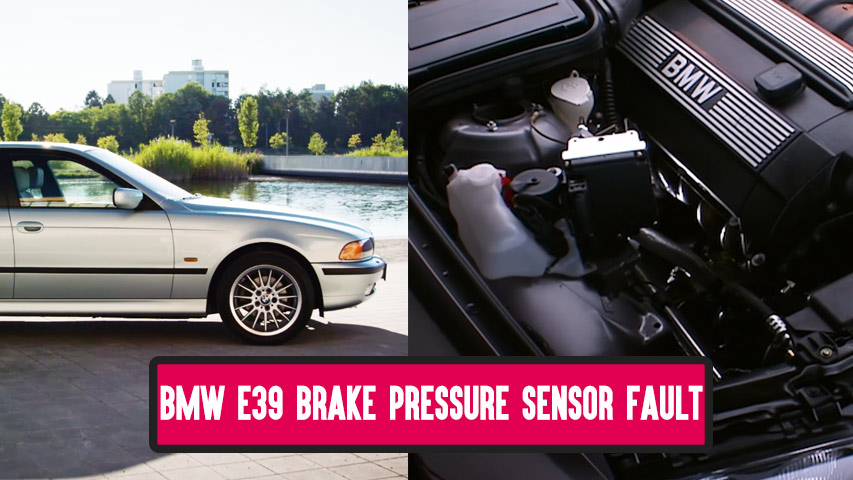If we want to look at two of the most prominent engines in the history of BMW, we can mention the BMW N54 vs N55. The first 6-cylinder linear engine in the history of the BMW is known as the M78 code, which was produced between 1993 and 1950.
The engine density ratio of 6 cylinders ranged from 5.6 to 1, producing about 68 Newton meters of torque and 29 horsepower. At the moment these figures seem insignificant but in the past they marked an important revolution for BMW. Now we want to examine and compare these two iron power plants. Stay tuned.

N55 Engine replaces N54
N55 engine was introduced as a replacement for N54 in BMW car models. This engine has performance and technological improvements compared to N54. The N54 used a blow-off valve and turbine speed regulator by suction control, while the N55 used an electric blow-off valve. From 2013 onwards, the turbine speed regulator was also electronically controlled. These engines have many similarities that reduce costs and increase production quality. Below we examine some of the features of the N55 engine that make it an attractive option for the N54:
- N55 Technology:
TwinScroll Turbocharger The N55 engine uses a TwinScroll turbocharger that has a significant improvement in power and torque delivery over the twin turbocharger N54. This technology increases engine performance below engine speed and reduces turbo lag. - Improving Fuel injection:
The N55 engine uses a more advanced fuel injection system that brings better performance, higher fuel efficiency and reduced environmental pollution. - Efficiency and Power:
The N55 offers more low-end torque than the N54, which makes it feel more responsive and powerful to drive. - Technical Specifications:
It can be said that both N54 and N55 iron power plants have the same technical specifications, including 300 horsepower, 400 Nm torque, 3-piston high-pressure fuel pump with the ability to create a maximum pressure of 200 bar, etc.
These two engines have a very high tuning potential that can produce more than 800 horsepower. The difference between the N54 and N55 engines is that the N54 uses a fuel injection system called HPI or high precision injection by means of piezoelectric fuel injectors.
But the N55 uses a newer fuel injection system called HDE or high pressure fuel injection with Bosch solenoid fuel injectors. The N54 lacked BMW’s Valvetronic system and this technology was used for the first time in the N55.

N54 and N55; Single Turbochargers compared to Twins
Naturally, the most important difference between the N54 and the N55 is in turbochargers. The N54 amplifies true twin turbochargers while its counterpart N55 has a twin turbocharger. A twin turbocharger is a turbocharger in which the turbocharger exhaust chamber is divided into 2 Scrolls.
Every 3 cylinders in a firing cycle feeds a separate scroll of the turbocharger, which reduces the return of the exhaust. The real twin turbo reflects the benefits of twin turbo. As with twin scrolling, 3 cylinders feed each of the two turbos, thereby reducing the return.
N54 vs N55, which Engine is more reliable?

The sensitive topic that is always discussed is which BMW engine is reliable. In simple terms, the N55 is more reliable. The N54 was the first mass-produced turbocharged gasoline engine produced over several decades by BMW.
Looking at the current production line, and in 2017, which are mostly turbocharged, experts believe that the N54 was an experiment in many ways. The N54 had been maligned early on because of its common problems and troubles N54 harassment cases include HPFP (fuel injectors) and its garbage gate noise.
The annoyance has persuaded some BMW holders to avoid the N54. However, BMW offered many calls and guarantees to help troubleshoot reliability issues, and since the introduction of the N55 many N54 related issues have been resolved.
But it usually does not affect the life or longevity of turbos. BMW’s willingness to “fix everything” and ensure problems with the N54 affected many BMW consumers; while the N55 was produced more reliably than the N54.
N55 vs N54 Open Deck

First, we must say that the deck is the surface where the head is screwed. The open deck design is for ease of construction and is not good for high cylinder pressure. This cylinder wall layout is supported in 2 locations.
Many consumer people believe that these engines cannot be turbocharged effectively, but they are not. The main difference between the open deck N54 and the open Deck N55 lies in the art of engine construction. The N54 engine is a linear six-cylinder engine with an open deck design, meaning that the cylinder block has open water channels.
The N55 engine, on the other hand, is also an in-line six cylinder engine, but has a closed deck design where water ducts in the cylinder block are closed. The open deck design of the N54 engines provides better cylinder cooling, which is especially important in high-performance applications.
On the other hand, the closed deck design of the N55 engine provides better strength and stability of the cylinder block, which can lead to improved durability and durability. In general, both engines are powerful and reliable options, the N54 engine is often considered more suitable for tuning and upgrading performance, while the N55 engine has a slightly more modern design with improved durability and reliability features.

a) N55 closed deck inserts
Closed deck inserts for the N55 engine are special inserts designed to close water ducts in the cylinder block and increase the stiffness of the block. This can help improve the durability and performance of the engine, especially in high-performance applications or adjustment and performance upgrades where more loads are introduced on the engine.
Closed deck inserts are placed in the cylinder block to close open areas between the cylinder holes. This increases the stiffness of the block, which in turn can reduce the deformation of the block under high loads. This improves engine stability and reduces the risk of problems, including cylinder head swinging or cylinder leakage.

b) N54 closed deck inserts
Closed deck inserts are designed for the N54 engine similar to the N55 engine. They are special inserts that are placed in the cylinder block to close open areas between the cylinder holes. This will increase the strength of the block, which, in turn, can improve the stability and durability of the engine, especially in high-performance applications or when adjusting and upgrading performance.
By closing the water duct in the cylinder block, these inserts can help reduce the risk of problems such as cylinder head swings or cylinder leaks. They are especially useful when the engine is subjected to higher loads, whether through racing programs or tuning that enhances engine performance.
However, there are a number of companies in the aftermarket that offer closed deck engine blocks for the N54. These blocks are generally considered upgrades for existing N54 engines. The advantages of these blocks are as follows:
- Reduced probability of cylinder deviation
- Improve power potential
- Increased engine strength and stability
c) N54 press closed deck

Pressing the N54 closed deck is a complex process that requires considerable technical knowledge and expertise. But in general, a series of cases must be observed. First, it is necessary to remove the engine from the car. To do this, lift the car with a jack and separate the wheels and brakes. Then you need to remove the engine from the engine compartment and place it on a workbench.
Now you need to separate the cylinder head and other engine components, which include separating the input and output manifolds, the camshafts, the timing belt and other components that are attached to the cylinder head. After removing the cylinder head, you should also remove the pistons, connecting rods and crankshaft. Now it’s up to machining the engine block to prepare for closed deck.
The process of this step requires the equipment and expertise of the lathe person so that the upper part of the engine block is carefully machined to create a smooth and uniform surface. Now the engine block must be installed. Carefully place the engine block in place and secure it with bolts. You need to make sure that the engine block is uniformly aligned with the existing engine block surface.
Pressing the N54 closed deck is a very precise process and should only be done by an experienced mechanic. Pressing the N54 closed deck is a very precise process and should only be done by an experienced Mechanic . It is suggested to have a detailed technical guide that describes the steps step by step, and if you are not sure about any of the steps, you should consult a specialist mechanic.
N54 Engine block
The N54 engine block is a versatile engine block developed for gasoline engines by BAM & co. The engine block has 6 cylinders and is fitted with an array of cutting-edge technologies, including dual turbocharger, direct fuel injection, and Vanus tranik technology.
The N54 engine block is highly regarded in terms of performance and dynamic capability and is very attractive for those interested in tuning and increasing the motor capability of cars.
The use of the N54 engine block in public cars, as well as in competitive racing, shows its popularity and value in the market. Due to its stable and reliable structure, this engine block is one of the popular options for tuning and improving engine performance.

N54 Engine Block specifications
Produced by BMW, the N54 engine block is a 3.0-litre (2979 CC) linear 6-cylinder engine that was used in a range of BMW vehicles from 2006 to 2013.
This engine is known for its strong performance, fast responsiveness and high reliability. The N54 is also popular for its high potential for upgrades and is a favorite of many car enthusiasts. The general specifications of this block are as follows:
- Type: deck autopen engine block
- Material: cast aluminum
- Volume: 3.0 liters (2979 CC)
- Density ratio: 10.2: 1
- Weight: 57.8 kg
- Cylinder diameter: 84 mm course
- Piston: 89.6 mm
N54 Engine block Function

The N54 engine block forms the so-called Main and basic part of the engine. The block uses the structure of aluminum cylinders and high strength, which reduces the overall weight of the engine and increases fuel efficiency. The interior design of the N54 block is such that the fuel and air flow is best supplied to the cylinders to increase the performance and efficiency of the engine.
The N54 block also has a strong cooling system that helps the engine in high thermal conditions such as a dual turbocharger that constantly intensifies engine heating to give optimal performance.
It has advanced electronic facilities that help regulate engine performance and better efficiency. These facilities include electronic fuel injection systems and ignition control systems.
Frequently Asked Questions about BMW N54 vs N55 :
- Why do people say driving the N55 is more boring than the N54?
In answer to this question, it can be said that probably because most of it has N54 Hayek or, most likely, SCC plates are completely sticky. - Are the N54 and N55 Pistons the same?
No, N54 and N55 Pistons are not the same. Although the two engines share many similarities, their Pistons differ due to design differences in their performance and reliability. - Does this open, closed and half affect the engine cooling at all?
In answer to this question, it is not certain whether the engine cooling will affect the opening or closing. But overall, yes, the type of engine deck can affect the cooling of the engine to some extent.
Sources:



